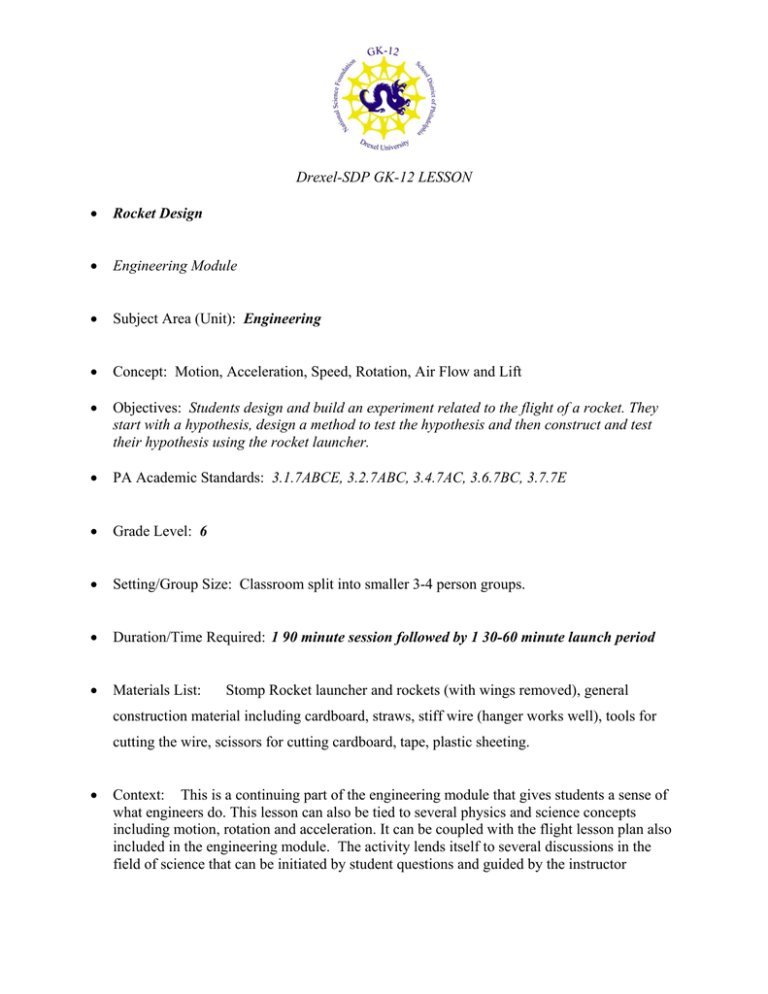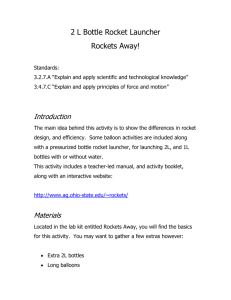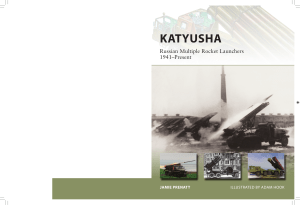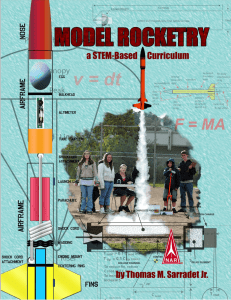Rocket Design Engineering Module Engineering
advertisement

Drexel-SDP GK-12 LESSON • Rocket Design • Engineering Module • Subject Area (Unit): Engineering • Concept: Motion, Acceleration, Speed, Rotation, Air Flow and Lift • Objectives: Students design and build an experiment related to the flight of a rocket. They start with a hypothesis, design a method to test the hypothesis and then construct and test their hypothesis using the rocket launcher. • PA Academic Standards: 3.1.7ABCE, 3.2.7ABC, 3.4.7AC, 3.6.7BC, 3.7.7E • Grade Level: 6 • Setting/Group Size: Classroom split into smaller 3-4 person groups. • Duration/Time Required: 1 90 minute session followed by 1 30-60 minute launch period • Materials List: Stomp Rocket launcher and rockets (with wings removed), general construction material including cardboard, straws, stiff wire (hanger works well), tools for cutting the wire, scissors for cutting cardboard, tape, plastic sheeting. • Context: This is a continuing part of the engineering module that gives students a sense of what engineers do. This lesson can also be tied to several physics and science concepts including motion, rotation and acceleration. It can be coupled with the flight lesson plan also included in the engineering module. The activity lends itself to several discussions in the field of science that can be initiated by student questions and guided by the instructor • Methods and Procedure: 1. Being by asking everyone in the class to draw a picture of a rocket, then ask several students to redraw their concepts on the board. Ask several questions relating to the rockets, particularly to the wings. Which will fly farther? Will any of them spin? What flight differences will the rockets different shapes and/or designs create? 2. Ask each group to think of something they would like to test related to rocket flight, the difference between wing shape versus flight path. Wing angle versus launch direction. Have each group come up with a hypothesis that they would like to test. 3. Then ask each group to clearly write up how they would test their hypothesis, what the design of the rockets would look like, what launches would be necessary and what measurements or observations they will have to make to determine the validity of their hypothesis 4. Have the students construct their designs using the rocket tubes that go with the Stomp Launcher. Important guidelines to follow are no holes in the tube and they cannot obstruct the opening at the bottom. 5. Once the designs for the experiment are complete, take the rockets outside to test launch them. Be sure each student brings his/her notebook and whatever is needed to collect the date necessary. 6. Allow each group to launch as described in their experiment design. Then take the necessary data and determine whether their hypothesis was correct. • Assessment: Have each group write up a short report on their findings. If possible have them use a computer to incorporate diagrams of their experimental procedures. Once they are completed, have them present their findings to the class. • Keywords: Flight, motion, lift • Author: Eric Gallo





